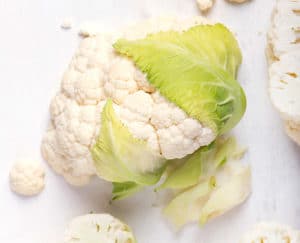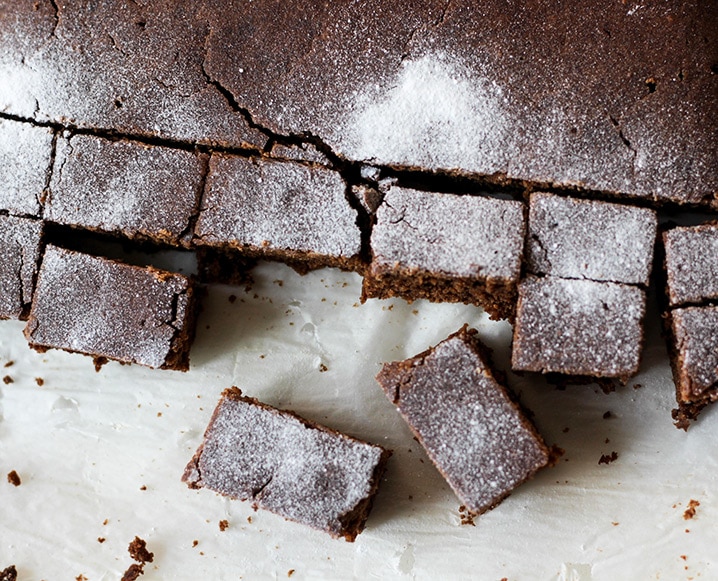
Cauliflower brownies? We know what you’re thinking. Enough is enough, right? Perhaps the cauliflower obsession has gone too far. That said, we're wedging yet another cauliflower hack into our lives with this impressive recipe by Danny Seo, out of his new cookbook Naturally, Delicious. Behold a delicious and nutritious dessert recipe that made us want to lick the bowl…
Quick: Picture the most nutritious vegetable you can think of. What comes to mind? A rainbow of goodness? Something dark and leafy? Maybe broccoli or Brussels sprouts. Probably kale. Perhaps bright purple cabbage. Definitely not cauliflower (unless of course, you took inspiration from where we all know this is headed).
Long relegated to the “pale foods” corner of the nutritional pyramid along with potatoes and parsnip, which for a long time were considered nutritionally void, cauliflower is finally receiving the attention it so deserves. It occupies not only the produce section, but the freezer aisle as well, as riced cauliflower becomes more widely available and appreciated. A nutritional powerhouse that shares the same species with the cruciferous vegetables listed above, cauliflower is versatile, affordable and, above all, delicious. Though it may fall somewhere at the end of the food rainbow (think of it as the clouds on either end), cauliflower packs a virtuous punch when it comes to vitamins, minerals and phytochemicals.

Why You Should Be Eating All The Cauliflower
Cauliflower is delicious and unexpected in the dessert below recipe. Here are just a few reasons why you should love this simple veggie:
What is it? In the same species (Brassica oleracea) as broccoli, Brussels sprouts, kale and cabbage, cauliflower is an annual edible plant with a dense white head similar to that of broccoli (though the two differ—broccoli heads are made up of tiny flower buds and bright green leaves). A nutritional workhorse, cauliflower has recently gained wider attention for its versatile flavor and unique nutritional profile, rich in antioxidants, phytochemicals, vitamins and minerals.
What are the benefits? Cauliflower is part of the cruciferous vegetable family, which includes vegetables dense in glucosinolates or sulfur-containing compounds that support detoxification and are thought to potentially reduce the odds of developing certain types of cancers. Cauliflower is rich in a variety of vitamins, including vitamin K, which can help prevent blood clots, and vitamin C, for boosted immunity. The high amounts of fiber in cauliflower aids in digestion and the same glucosinolates that support detoxification also encourage the liver to release protective enzymes that neutralize free radicals and protect the gut lining.
How do I use it? Cauliflower is incredibly versatile, so much so that you can toss it into smoothies and baked goods without altering the flavor too much (I say too much because there can be too much of a good thing—too much cauliflower tastes like, well, cauliflower). Add frozen cauliflower to smoothies in place of, or in addition to, bananas as a thickener and nutritional boost. Pureed cauliflower can also be added to baked goods, soups, stews and sauces as a thickener and to boost the nutritional profile. Cauliflower is also incredible on its own—try it raw or roasted, or use it in place of rice as a low-carb, paleo-friendly substitute.
The post These Brownies Made Out Of Cauliflower Are Bringing Us Life appeared first on The Chalkboard.
from The Chalkboard https://ift.tt/360UaV2
via IFTTT
No comments:
Post a Comment